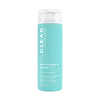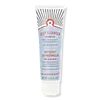What's inside
What's inside
 Key Ingredients
Key Ingredients

 Benefits
Benefits

 Concerns
Concerns

 Ingredients Side-by-side
Ingredients Side-by-side

Salicylic Acid
MaskingWater
Skin ConditioningSodium Lauroyl Sarcosinate
CleansingAcrylates/Steareth-20 Methacrylate Copolymer
Glycerin
HumectantPEG-200 Hydrogenated Glyceryl Palmate
CleansingSodium Laureth Sulfate
CleansingArginine
MaskingButylene Glycol
HumectantPEG-7 Glyceryl Cocoate
EmulsifyingPanthenol
Skin ConditioningDisodium EDTA
Citric Acid
BufferingPEG-60 Hydrogenated Castor Oil
EmulsifyingSodium Citrate
BufferingPhenoxyethanol
PreservativeCaprylyl Glycol
EmollientChlorphenesin
AntimicrobialSalicylic Acid, Water, Sodium Lauroyl Sarcosinate, Acrylates/Steareth-20 Methacrylate Copolymer, Glycerin, PEG-200 Hydrogenated Glyceryl Palmate, Sodium Laureth Sulfate, Arginine, Butylene Glycol, PEG-7 Glyceryl Cocoate, Panthenol, Disodium EDTA, Citric Acid, PEG-60 Hydrogenated Castor Oil, Sodium Citrate, Phenoxyethanol, Caprylyl Glycol, Chlorphenesin
Water
Skin ConditioningSodium Lauroyl Sarcosinate
CleansingCocamidopropyl Betaine
CleansingGlycerin
HumectantAcrylates/Steareth-20 Methacrylate Copolymer
PEG-120 Methyl Glucose Dioleate
EmulsifyingDipropylene Glycol
HumectantCamellia Sinensis Leaf Extract
AntimicrobialChrysanthemum Parthenium Extract
Skin ConditioningGlycyrrhiza Glabra Root Extract
BleachingBisabolol
MaskingRosmarinus Officinalis Leaf Extract
AntimicrobialAllantoin
Skin ConditioningAcrylates/C10-30 Alkyl Acrylate Crosspolymer
Emulsion StabilisingPanthenol
Skin ConditioningIllite
AbrasiveCaprylyl Glycol
EmollientPotassium Hydroxide
BufferingDisodium EDTA
Mica
Cosmetic ColorantTetrasodium EDTA
Phenoxyethanol
PreservativeCI 77491
Cosmetic ColorantWater, Sodium Lauroyl Sarcosinate, Cocamidopropyl Betaine, Glycerin, Acrylates/Steareth-20 Methacrylate Copolymer, PEG-120 Methyl Glucose Dioleate, Dipropylene Glycol, Camellia Sinensis Leaf Extract, Chrysanthemum Parthenium Extract, Glycyrrhiza Glabra Root Extract, Bisabolol, Rosmarinus Officinalis Leaf Extract, Allantoin, Acrylates/C10-30 Alkyl Acrylate Crosspolymer, Panthenol, Illite, Caprylyl Glycol, Potassium Hydroxide, Disodium EDTA, Mica, Tetrasodium EDTA, Phenoxyethanol, CI 77491
 Reviews
Reviews

Ingredients Explained
These ingredients are found in both products.
Ingredients higher up in an ingredient list are typically present in a larger amount.
We don't have a description for Acrylates/Steareth-20 Methacrylate Copolymer yet.
Caprylyl Glycol is a humectant and emollient, meaning it attracts and preserves moisture.
It is a common ingredient in many products, especially those designed to hydrate skin. The primary benefits are retaining moisture, skin softening, and promoting a healthy skin barrier.
Though Caprylyl Glycol is an alcohol derived from fatty acids, it is not the kind that can dry out skin.
This ingredient is also used as a preservative to extend the life of products. It has slight antimicrobial properties.
Learn more about Caprylyl GlycolDisodium EDTA plays a role in making products more stable by aiding other preservatives.
It is a chelating agent, meaning it neutralizes metal ions that may be found in a product.
Disodium EDTA is a salt of edetic acid and is found to be safe in cosmetic ingredients.
Learn more about Disodium EDTAGlycerin is already naturally found in your skin. It helps moisturize and protect your skin.
A study from 2016 found glycerin to be more effective as a humectant than AHAs and hyaluronic acid.
As a humectant, it helps the skin stay hydrated by pulling moisture to your skin. The low molecular weight of glycerin allows it to pull moisture into the deeper layers of your skin.
Hydrated skin improves your skin barrier; Your skin barrier helps protect against irritants and bacteria.
Glycerin has also been found to have antimicrobial and antiviral properties. Due to these properties, glycerin is often used in wound and burn treatments.
In cosmetics, glycerin is usually derived from plants such as soybean or palm. However, it can also be sourced from animals, such as tallow or animal fat.
This ingredient is organic, colorless, odorless, and non-toxic.
Glycerin is the name for this ingredient in American English. British English uses Glycerol/Glycerine.
Learn more about GlycerinPanthenol is a common ingredient that helps hydrate and soothe the skin. It is found naturally in our skin and hair.
There are two forms of panthenol: D and L.
D-panthenol is also known as dexpanthenol. Most cosmetics use dexpanthenol or a mixture of D and L-panthenol.
Panthenol is famous due to its ability to go deeper into the skin's layers. Using this ingredient has numerous pros (and no cons):
Like hyaluronic acid, panthenol is a humectant. Humectants are able to bind and hold large amounts of water to keep skin hydrated.
This ingredient works well for wound healing. It works by increasing tissue in the wound and helps close open wounds.
Once oxidized, panthenol converts to pantothenic acid. Panthothenic acid is found in all living cells.
This ingredient is also referred to as pro-vitamin B5.
Learn more about PanthenolPhenoxyethanol is a preservative that has germicide, antimicrobial, and aromatic properties. Studies show that phenoxyethanol can prevent microbial growth. By itself, it has a scent that is similar to that of a rose.
It's often used in formulations along with Caprylyl Glycol to preserve the shelf life of products.
Sodium Lauroyl Sarcosinate is a cleansing agent and emulsifier. It is a surfactant derived from sarcosine, and a common source is coconut oil.
As a surfactant, Sodium Lauroyl Sarcosinate helps lift dirts, oil, and other molecules to be washed away. In leave-on products, this ingredient is used as an emulsifier. Emulsifier help prevent ingredients such as oils and waters from separating.
Sodium Lauroyl Sarcosinate is also commonly found as a foaming agent in shampoo, toothpaste, and shaving foam. It is amphiphilic, meaning it loves both water and fats.
Learn more about Sodium Lauroyl SarcosinateWater. It's the most common cosmetic ingredient of all. You'll usually see it at the top of ingredient lists, meaning that it makes up the largest part of the product.
So why is it so popular? Water most often acts as a solvent - this means that it helps dissolve other ingredients into the formulation.
You'll also recognize water as that liquid we all need to stay alive. If you see this, drink a glass of water. Stay hydrated!
Learn more about Water